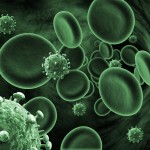
Oral Ulcers occur more frequently, last longer and produce more painful symptoms in HIV-infected adults. Aphthous ulcers are generally classified as major, minor or herpetiform. Major ulcers can exceed 3cm in diameter and can develop into large necrotic lesions. Major ulcers are seen more commonly in HIV-infected than non-infected adults. The aim of this Cochrane review was to evaluate the efficacy and side effects of topical agents used in the treatment of HIV-related oral aphthous ulcers in adults.
What did they do
The Embase, PubMed and Cochrane Central Registry of Controlled trials( CENTRAL) was searched together with relevant conference proceedings with no language restrictions. Only randomised controlled trials evaluating any topical treatment for HIV oral aphthous ulceration were considered.
What did they find
A total of 233 abstracts were retrieved from the databases searched. None of the identified studies met our inclusion criteria. Ten of the studies identified were reports of systemic rather than topical treatment. Therefore, no studies were included in this review.
The authors concluded
There is a need for well designed studies to evaluate the efficacy and safety of topical agents for the treatment of HIV related oral aphthous ulcers.
Comment
HIV/AIDS is the 6th leading cause of death worldwide and the leading cause of death in Africa. It is estimated that around 4 million people are newly infected each year. Data from UK surveillance reports at the end of December 2011 indicate that 5,600 people (4,050 men and 1,550 women) were diagnosed with HIV in the United Kingdom in 2011 (Health Protection Report).
Links
Kuteyi T, Okwundu CI. Topical treatments for HIV-related oral ulcers. Cochrane Database of Systematic Reviews 2012, Issue 1. Art. No.: CD007975. DOI: 10.1002/14651858.CD007975.pub2.
Health Protection Report April 2012
